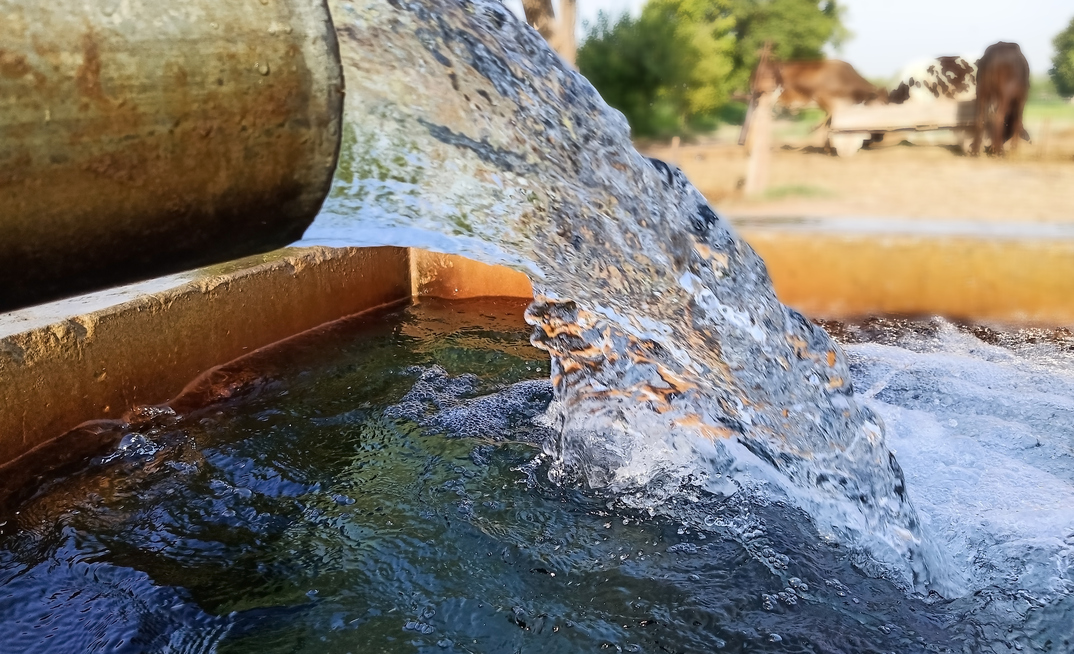Drilling a water well requires careful planning, expertise, and adherence to best practices to ensure a successful and sustainable water supply is secured.
From project initiation to the final wellhead installation, every one of the following 10 steps is crucial to the overall success of the drilling project.
From thorough planning to getting an accurate geologic assessment and implementing appropriate drilling methodologies to careful well development, here is your blueprint for water well drilling success.
Plan properly
The foundation of a successful water well project lies in comprehensive planning. Engaging a consultant or contractor with extensive experience installing properly engineered water wells is essential. Ensuring a risk register is in place at commencement ensures all eventualities are at least considered, allowing mitigation measures to be in place if required.
Your initial planning phase involves site assessment, regulatory compliance consideration, and determining the most suitable drilling methods based on on-site geological conditions.
Prioritise a prognosis
Before drilling commences, obtaining a prognosis report is a critical step that should not be skipped. A prognosis provides detailed information about the subsurface geology, helping to identify potential risks and challenges that could scupper your project's success.
By understanding the geological formations beforehand, drillers can select the most appropriate drilling methodology, minimising unexpected surprises during the drilling process that could cause delays or increased costs. It will allow for challenges such as artesian pressure to be planned for and factored in at a budgeting stage.
Drilling down into the methodology
The choice of drilling methodology is closely tied to the geological information gathered through the prognosis. Whether rotary, percussion, cable tool or other methods, selecting the right drilling approach ensures efficient penetration through any formations encountered, reducing the risk of complications and optimising your well's construction.
Focus on your flushing methodology
Flushing methodologies, such as the use of fluids, muds, air, or foam, are crucial for maintaining drilling efficiency and preserving the integrity of the wellbore. Choice can depend on the geology encountered and can also be informed by the prognosis.
Proper flushing helps manage cuttings, cools the drill bit, and can even prevent the collapse of the borehole. A properly weighted mud can protect against the walls swelling or moving during drilling and can ensure that the water in the well is properly controlled.
Take samples of the geology
As drilling progresses, taking samples of the geology is imperative. Accurate recording of geological formations encountered allows for a comprehensive understanding of subsurface conditions. This data becomes invaluable for designing the final well, selecting appropriate materials, and planning for effective well development. It will also assist in the completion of comprehensive drilling logs and records, which need to be provided to the British Geological Survey if drilling deeper than 15m. It is also a valuable addition to the handover documents for the client upon completion.
Develop the well completely
Once the drilling reaches the desired depth, well development is crucial to optimise water flow. Methods such as airlifting or, in certain geological contexts, acidisation may be employed. This step ensures that the well is clean, free from obstructions, and capable of delivering the maximum yield.
Install the borehole with the best materials
Ensuring the best materials are used in the borehole's installation helps ensure both the well's longevity and efficiency. This includes installing slotted sections in appropriate zones to facilitate water entry and prevent sand or sediment intrusion.
A properly planned formation stabiliser needs to be installed at the correct depth and contain the right particle size for the geology encountered during drilling. This then needs to be blinded and a grout seal installed correctly to ensure the competency of the well is protected for the future.
Pump testing
Pump testing is essential to gather data on the hydraulic properties of the well. This information is then used to design the most suitable pumping solution, optimising the well's performance and efficiency.
Pump tests can also determine the reliable long-term yield of a borehole and assess the hydraulic performance in terms of yield drawdown. Tests also show whether the pumping and monitoring equipment is working safely and efficiently and can determine the effects of water abstraction on any neighbouring water wells.
The final results from this phase help determine the correct depth at which the permanent pump should be installed in the borehole and ensure the pump selected for the duty is sitting comfortably within its performance curve.
Finish the borehole with a suitable wellhead
The penultimate step to success involves finishing the borehole with a wellhead and enclosure. Best practice dictates placing the wellhead above ground whenever possible. This ensures easier access for maintenance, reduces the risk of contamination, and enhances the overall safety and functionality of the water well.
A lockable and sealed enclosure protects the asset moving forward and ensures easy access in the future.
Water treatment and annual maintenance
The quality of water supplied by a borehole can sometimes require treatment, typically for bacteria or sediment but sometimes for other chemical parameters. Your drilling contractor should consider it a duty of care to supply safe water.
The pump test can provide information on water quality, whether it is suitable for the intended use and stable in the long term, or whether there could be future problems, such as drawing in saline or polluted water after extended periods of pumping.
If a borehole is being installed for a shared supply, treatment for sediment and bacteria will be required as a minimum by the local authority, along with any other recommendations made from the findings of the water test in line with a site-specific risk assessment.
Drilling a water well involves a series of meticulously planned steps, each crucial for the success of the project. By following best practices from the outset, including thorough planning, geologic assessment, proper drilling methodologies, and careful well development, drillers can ensure a reliable and sustainable water supply is installed.
Got a story? Email: duncan.moore@aspermont.com


















